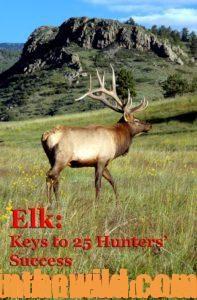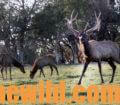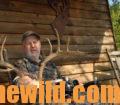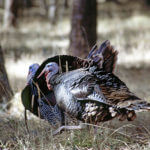Editor’s Note: Al Morris of Springville, Utah, has hunted elk for three decades and has guided for elk for two decades in Utah, New Mexico, Colorado, Wyoming, Idaho, Montana and Arizona. Morris has won the World Elk Calling Championship and the Best of the West Elk-Calling Contest, the Utah State Bugling Championship and the World Coyote Calling Championship.
* Have realistic expectations of the hunt. If you’ve done your homework, you’ll know the size of the bulls that are taken with the outfitter you’ve selected. If you want to take a 300- to a 400-inch bull, you need to hunt an area that normally produces that size bull – generally private lands where the price of the hunt may be about $10,000. Plenty of outfitters can help you take a 5×5 bull. Understand what type of elk you realistically can expect to bag before you book the elk hunt.
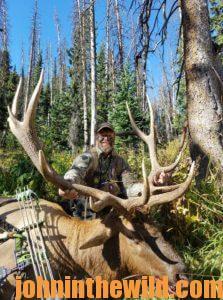
* Know what type of elk-hunting experience you want. An elk hunt is a total body experience and includes much more than just taking an elk. Some hunters prefer staying in a wall tent, a camping-out type of elk hunt. Other hunters want to stay in a lodge. Make sure you tailor your hunt to fit what you like to do.
* Be honest with your guide about your expectations for the bull you want to take, your physical condition and your hunting experiences.
* Get yourself in some kind of physical shape before the hunt. Even if you’re in a wheelchair, you can get in shape by rolling your chair up a ramp. If you’re not in a wheelchair, walk stadium steps or steps at work. Do everything you can to get in the best-possible physical shape before your elk hunt in the fall. When you book a hunt in January or February, start getting in shape then. Serious elk hunters stay in shape all year, but the majority of us don’t. I eat McDonald’s hamburgers just like you do. But when I know I’ve got a big hunt coming up, I work hard to trim-down my weight and get my body in shape for the hunt.
* Be mentally prepared for the hunt. A hunter may miss an elk, because he or she is not mentally prepared for the size of the animals and having to make the shot at a really-big bull once he reaches the spot to take the shot. If you’re hunting with a rifle, you need to visually see the elk on the target every time you pull the trigger when you’re practicing at a rifle range. If you’re hunting with a bow, visualize that big elk at 12 to 15 yards from you. Practice drawing and making your first shot at that big animal. Look at videos, and visit an archery range with a life-sized elk target to prepare you for the enormous size of these animals.
* Make sure your equipment is tuned-up. To hunt elk with a bow, practice shooting every day you can before the hunt. You need to know before you shoot the bow that you can make the shot, if and when the elk presents you with a good shot. If you’re hunting with a rifle, know where that bullet will hit every time you squeeze the trigger. Most people miss with their bows or their guns, because they aren’t prepared for the types of shots they’ll have to take.
Many elk hunters put their guns in gun vises or brace them with sandbags, take plenty of time to aim and then shoot. Instead of shooting like that, practice by running to the shooting bench, 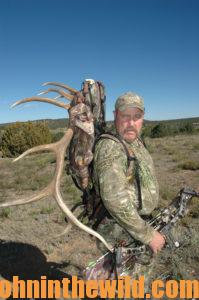 standing up, taking a freehand shot, running to the target, coming back, picking up your gun and shooting another freehand shot. The same process works when you shoot a bow. Run to the spot where you’ll shoot, draw and shoot your bow, run to your target, come back, draw, and shoot. Sure, you can shoot with a sandbag or a rest at a shooting range. However, none of us are prepared to shoot when our heart-rate is up and after we’ve sprinted up a hill to reach the place where the elk are traveling. The old adage, “You play like you practice,” isn’t only true in football, but also in hunting.
standing up, taking a freehand shot, running to the target, coming back, picking up your gun and shooting another freehand shot. The same process works when you shoot a bow. Run to the spot where you’ll shoot, draw and shoot your bow, run to your target, come back, draw, and shoot. Sure, you can shoot with a sandbag or a rest at a shooting range. However, none of us are prepared to shoot when our heart-rate is up and after we’ve sprinted up a hill to reach the place where the elk are traveling. The old adage, “You play like you practice,” isn’t only true in football, but also in hunting.
* Practice shooting under stressed conditions. Rarely will you get a shot when you’re totally calm, rested and relaxed. There’s no antidote for buck fever. Even the most-sober hunters will get rattled the first time an elk comes within 12 yards, bugling and slinging snot right in front of them. However, if you know in your heart that you can make the shot when you get that bow drawn-back or that rifle’s on your shoulder, that confidence you have with your weapon can help diffuse buck fever. I’ve seen quite a few elk hunters miss easy shots, because they can’t decide how to take the safeties off their guns. If they’ve been practicing, then taking their safeties off will be instinctive. I’ve had bulls step out at 20 yards and watched a hunter squeeze his finger three or four times. When I later have asked the hunter if he’s taken-off the safety, he may not even have known where the safety is located on his gun. I’ve had guys almost melt on me when a big bull comes in-close, because they aren’t mentally ready to see animals that big and aren’t familiar enough with their weapons to find their safeties, push them off and make the shots.
To learn more about elk hunting, check out John E. Phillips’ book, “How to Find Your Elk and Get Him in Close,” available in Kindle, print and Audible versions at http://amzn.to/17ENNqK.
